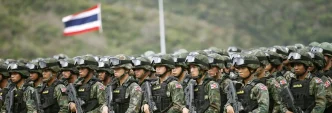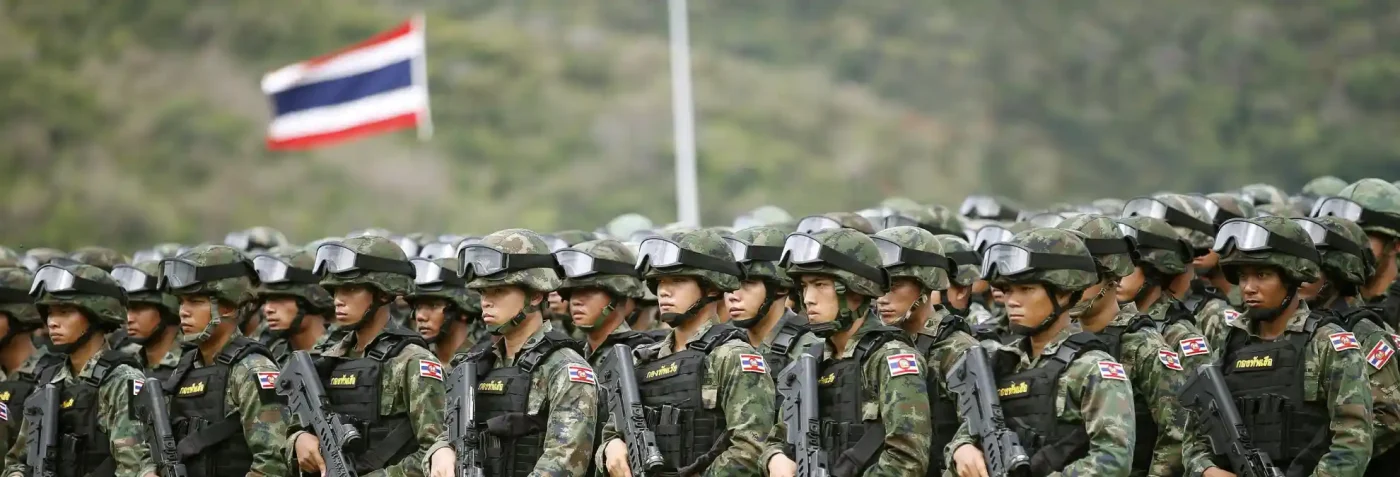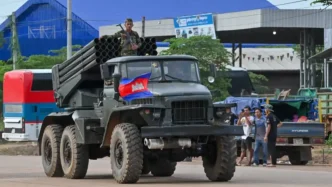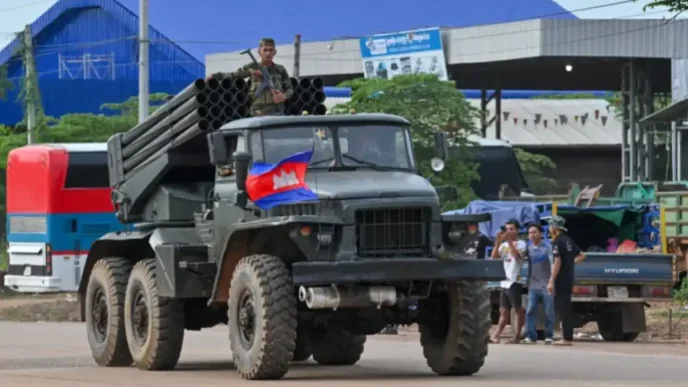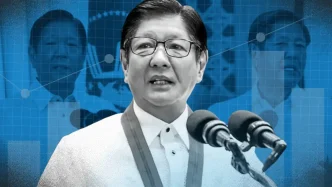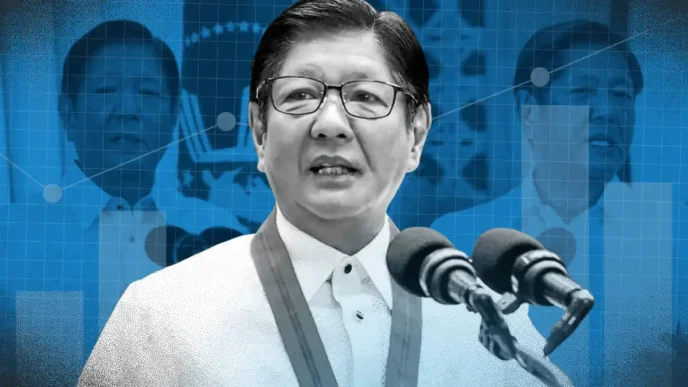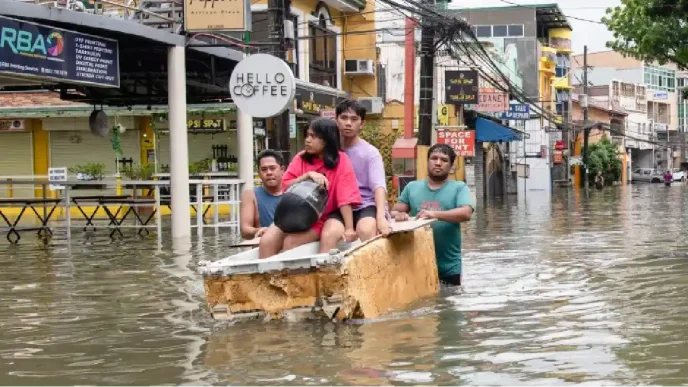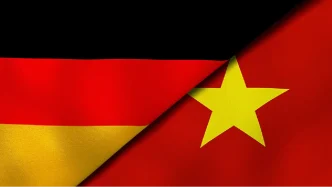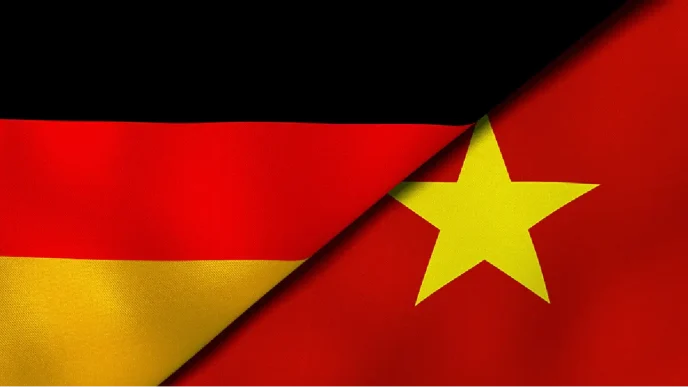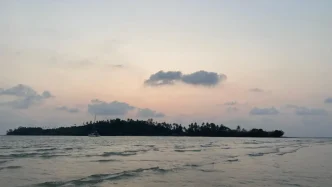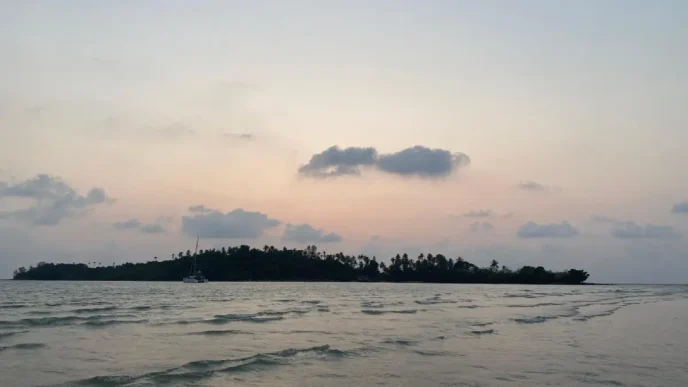A strategic military blueprint, the “Chakrabongse Bhuvanath” plan, has been thrust into the spotlight as Thailand’s armed forces prepare for potential escalation along the Thai-Cambodian border. Following a recent landmine incident that injured soldiers in Ubon Ratchathani province, the Thai military has ordered its First and Second Army Regions to ready personnel and equipment for immediate deployment. This development signals heightened preparedness to defend national sovereignty, while raising questions about the stability of an already tense border region.
A Landmine Incident Sparks Action
The catalyst for this military mobilization was a devastating explosion in the Huay Bon area, near the Chong An Ma checkpoint in Nam Yuen district, Ubon Ratchathani. Soldiers from the 14th Infantry Regiment, while on patrol along the Thai-Cambodian border, inadvertently triggered a landmine. The blast left one soldier with severe leg injuries and four others suffering from chest tightness and ear ringing due to the shockwave. All five are currently under treatment at Nam Yuen Hospital.
This incident has underscored the persistent dangers in the border areas, where unresolved territorial disputes and remnants of past conflicts continue to pose risks. The Thai military’s swift response—activating a strategic defense plan—reflects the gravity of the situation and the urgency to prevent further casualties or escalations.
Unpacking the ‘Chakrabongse Bhuvanath’ Plan
Named after Prince Chakrabongse Bhuvanath, a revered military modernizer and the “Father of the Royal Thai Air Force” the plan is a comprehensive framework designed to safeguard Thailand’s sovereignty. Developed by Gen Chalermpol Srisawat, a former Commander-in-Chief of the Royal Thai Army, it draws on historical military wisdom and strategic foresight. The plan was notably deployed during the 2011 Preah Vihear temple conflict, a dispute over territory near the ancient Hindu temple that saw intense clashes between Thai and Cambodian forces.
At its core, the “Chakrabongse Bhuvanath” plan emphasizes intelligence gathering, operational readiness, and a structured response mechanism. It prioritizes the safety of both military personnel and civilians while maintaining the flexibility to enact countermeasures if peaceful resolutions fail. Thai Army Chief has instructed units, particularly in the First and Second Army Regions, to ensure full preparedness for deployment at a moment’s notice. High-ranking commanders may also visit the border areas to oversee operations and assess the situation on the ground.
The plan’s focus on systematic problem-solving is evident in its approach to border issues. Rather than an immediate resort to force, it advocates for appropriate mechanisms to address tensions, ensuring that any response aligns with national defense priorities. Intelligence coordination plays a critical role, with ongoing efforts to collect data on potential threats in the region.
Historical Context and Strategic Significance
The “Chakrabongse Bhuvanath” plan is not a recent invention but a tested strategy rooted in Thailand’s military history. During the 2011 Preah Vihear conflict, it was credited with enabling a decisive response that quelled hostilities for nearly a decade. This historical success has cemented its reputation as a formidable tool for defending national interests, particularly in the volatile Thai-Cambodian border zone.
Prince Chakrabongse Bhuvanath, after whom the plan is named, was a visionary figure in Thai military history. As the 43rd son of King Chulalongkorn (Rama V), he received military education in Russia and later held significant positions such as Chief of Staff of the Army. His pioneering contributions to aviation led to the founding of the Army Air Division in 1911, which evolved into the Royal Thai Air Force. Naming the plan in his honor reflects a commitment to his legacy of innovation and defense of national sovereignty.
National Parks as Military Bases
In a related development, Thailand’s Department of National Parks, Wildlife and Plant Conservation has opened six national park and wildlife sanctuary areas along the Thai-Cambodian border for military use as operational bases. Athapol Charoenshunsa, the Director-General of the department, has directed staff to vacate these areas for safety reasons following recent border tensions. However, some department experts, skilled in field patrols under the “Smart Patrol” system, will remain to provide consultation on patrolling techniques and share critical information about the terrain.
This collaboration highlights the multi-faceted approach to border security, with the department offering supplies and logistical support while combat operations remain under military jurisdiction. The use of national parks as strategic bases underscores the urgency of the situation and the need for accessible, secure locations to coordinate defense efforts.
Border Tensions and Regional Implications
The Thai-Cambodian border has long been a flashpoint for territorial disputes, with the Preah Vihear temple area remaining a particularly contentious zone. While the 2011 conflict was a significant escalation, smaller incidents—such as landmine explosions—continue to strain relations between the two nations. The activation of the “Chakrabongse Bhuvanath” plan signals Thailand’s determination to prevent such incidents from spiraling into broader confrontations.
Yet, the plan’s emphasis on peaceful resolution and systematic response mechanisms suggests a cautious approach. The Thai military has made it clear that while it prioritizes de-escalation, it is prepared to defend its territory if necessary. This balance between restraint and readiness is crucial in a region where missteps could have far-reaching diplomatic and security consequences.
For Cambodia, the mobilization of Thai forces near the border may be perceived as a provocative move, potentially prompting a counter-response. Both nations have a history of engaging in dialogue to manage disputes, often with mediation from regional bodies like the Association of Southeast Asian Nations (ASEAN). However, the presence of military bases in national parks and the strategic focus on border defense could complicate these efforts.
Human and Political Costs
Beyond the immediate military implications, the situation along the Thai-Cambodian border has a profound human impact. The injured soldiers are a stark reminder of the risks faced by those tasked with protecting national boundaries. Civilians living in border areas also bear the burden of uncertainty, with potential disruptions to their livelihoods and safety if tensions escalate.
Politically, the Thai government faces pressure to demonstrate resolve in protecting sovereignty while avoiding actions that could be seen as overly aggressive. Domestic audiences often view border issues through the lens of national pride, and any perceived weakness could have political repercussions. At the same time, maintaining regional stability is a priority, as Thailand plays a key role in ASEAN and seeks to foster cooperation with its neighbors.
Looking Ahead: Stability or Escalation?
As the Thai military implements the “Chakrabongse Bhuvanath” plan, the coming weeks will be critical in determining whether this strategic mobilization leads to stability or further tension. The plan’s historical success offers hope for a measured response, but the unpredictable nature of border disputes means that outcomes remain uncertain. Regional observers will be watching closely to see if dialogue can prevail over confrontation.
For now, the focus remains on protecting personnel and civilians while addressing the root causes of border incidents. The collaboration between the military and the Department of National Parks illustrates a comprehensive approach to security, blending strategic positioning with local expertise. Yet, the question lingers: will this renewed emphasis on defense strengthen Thailand’s borders, or will it ignite a cycle of mistrust with Cambodia?

